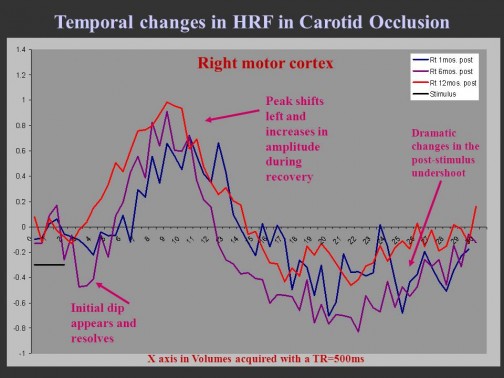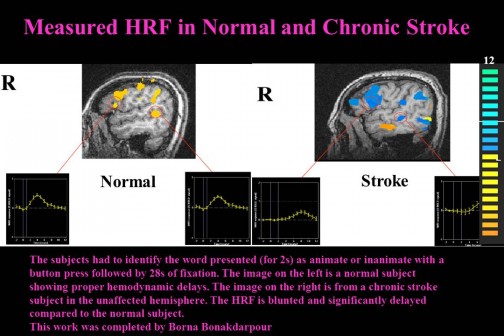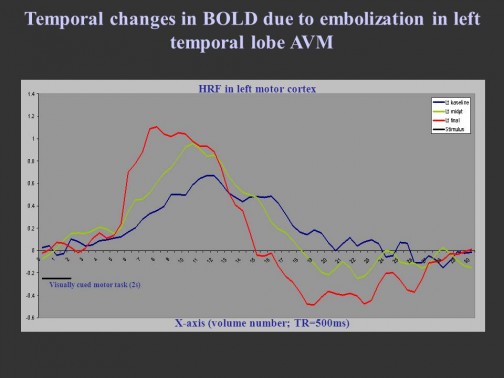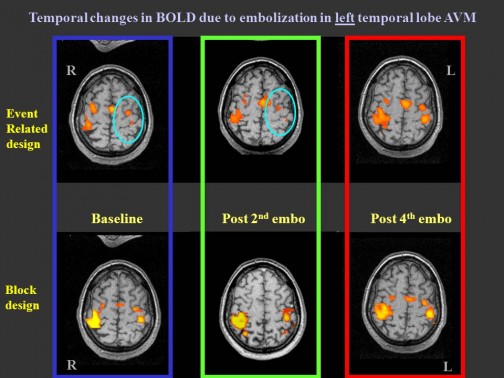
Fig. 1: Changes in the HRF over time in a person with an occlusion. Note how the function shifts to the left (gets faster) as the subject returns to normal.
Another useful tool for investigating the underlying vascular physiology is the impulse response function or the hemodynamic response function. Using brief visually cued motor stimuli, it is possible to measure properties of the local cerebrovasculature. This information is useful for normalizing blood oxygen level dependent (BOLD) signal or for detecting abnormalities that might effect interpretation. We have shown that the HRF can indicate when the cerebrovasculature has returned to normal following treatment (Read Carotid Occlusion Paper).

Fig 2: Demonstration of a delayed HRF in the stroke subject on the right compared to the normal subject on the left.
The HRF measure is a response to a task based challenge. It is important to measure in subjects with known pathology such as a stroke or in an aging population since their vessels often have different properties than normal subjects. In a study with collaborators in the School of Speech and Communication Disorders (Dr. Thompson), we demonstrated that using the incorrect HRF in stroke patients would often mask the true activation of the language network (Read Stroke HRF paper). We directly measured the HRF in different regions of the brain which allowed us to detect language activation in brain tissue adjacent to the stroke that was not previously detected.

Fig 3: Prior to treatment (blue curve) shows a delayed and blunted HRF; following 2 endovascular treatments (green) and 4 treatments (red) the HRF has returned to a normal shape.
The HRF can also be used to monitor the effects of therapy on patients. Working with collaborators in Neurosurgery (Dr. Batjer), we demonstrated changes in the HRF follwoing treatment of a patient with a large temporal lobe arteriovenous malformation (AVM, a congenital condition where arteries bypass the capillary bed and drain directly into the veins). In this case, endovascular treatment was used to access the deep vessels of the AVM to minimize the difficulty of the eventual surgery. Mapping the HRF function demonstrated the truly profound effect the treatment had on the patient’s cerebrovasculature (See Figure 3).

Fig. 4: This figure demonstrates the importance of using a block design in populations at risk for vascular disease. The event related design was unable to detect activation in the left hemisphere of the AVM patient shown in Fig. 3. However, the block design was capable of detecting activation in both hemispheres.
Figure 4 shows the ability to detect BOLD activation changes with a Block design even when the HRF is delayed and shifted. Note that the HRF is measured in the primary motor cortex while the AVM is located in the temporal lobe.
